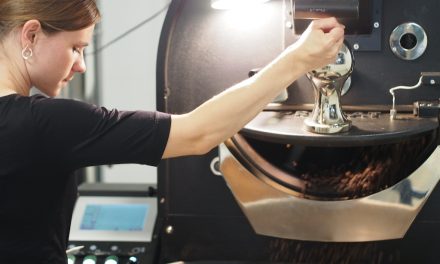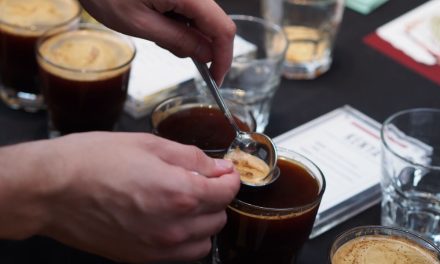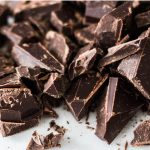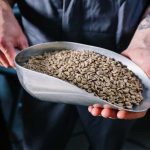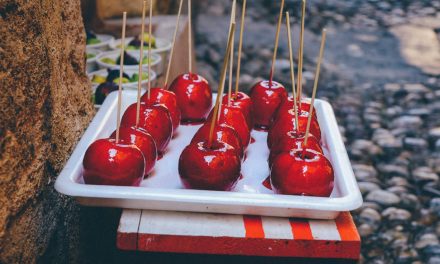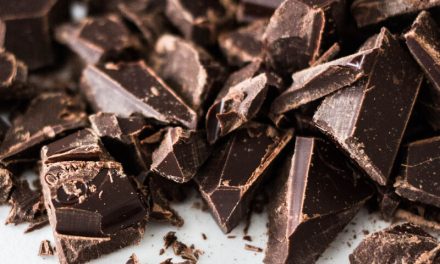
Some sensory vocabulary

Aroma
Aroma
Aroma is the scent or smell that is perceived by the nose or by sniffing. Aromas are gaseous and therefore volatile, which means they are fleeting and evaporate quickly.
Flavors can have positive associations. We perceive vanilla, hazelnut or dark chocolate as pleasant. However, flavors can also have negative associations. We perceive phenol, rancid butter or ash as unpleasant. We perceive flavors both through the nose, orthonasal, and through the back of the throat, retronasal.
Flavor
Flavor
Flavor is the combination of aroma, taste and the stimulus of the trigeminal nerve. It denotes the overall impression that arises from the olfactory (here: the retronasal), gustatory and trigeminal perception.
Basic Taste
Basic Taste
Sweet, salty, sour, bitter, umami – these are our five recognized basic tastes. Fat and metallic are not currently considered basic tastes. Each taste bud in our papillae on the tongue can perceive each type of basic taste.
Furthermore, we react to the basic tastes with varying degrees of sensitivity. We are most likely to recognize salty, followed by sweet, sour and finally bitter.
How can you easily train your basic taste? By briefly holding your nose while eating or drinking and paying attention to which basic taste(s) you perceive on your tongue.
Aroma comes from the Greek
and means “spice, fragrance, perfume”
In general, aromas have two functions:
On the one hand, their scents ward off enemies. They are therefore a weapon against predators.
On the other hand, they attract friends. They thus serve to ensure reproduction.
Aromas are also very useful for us humans. If something smells good, we conclude that it is good for us and we can consume it without problems. If something smells bad, we conclude that it will harm us and we leave it alone.
Trigeminal Nerve
Trigeminal Nerve
Also known as the trigeminal nerve, it is a network of many nerve endings that are distributed in the mouth and facial area. They bundle to form the fifth cranial nerve and primarily transmit painful sensations. The nerve endings react sensitively to spiciness, for example from spices.
The perceptions of the trigeminal nerve combine with those of the olfactory and gustatory senses to create what we call flavor. The function of the trigeminal nerve is to warn us of spicy and thus dangerous foods.
Orthonasal
Orthonasal
Describes normal smelling through the nostrils. When we inhale, airborne scents enter the nasal cavity through the nostrils. Here, the scents dock at the aroma receptors in the nasal roof. The information about the decoded scent finds its way through the nasal roof directly into the brain.
Reference Coffee
Reference Coffee
Sometimes it can be useful to use a reference coffee. This is essential for an in/out test, but a reference coffee can also be very helpful when evaluating using a cupping protocol.
In this case, a reference coffee forms the basis against which the characteristics of other coffees (e.g. sweetness, acidity, body) are compared. The reference coffee represents the “zero point”, so to speak. In practice, you now taste each coffee in comparison to this reference coffee.
Retronasal
Retronasal
When we perceive scents retronasally, aromas flow up through the connection between the mouth and nasal cavity to the roof of the nose (from “retro” for back and “nasal” for nose). So we breathe from behind, especially after swallowing or exhaling. We evaluate scents that we perceive retronasally differently than we do through orthonasal perception. This is due to the influence of saliva and temperature in the oral cavity.
We often assign aromas that we perceive retronasally to taste, which is wrong. The combination of retronasal perception with the stimuli of the trigeminal nerve and the types of basic taste lead to what we call flavor.
The sugar-cinnamon test impressively demonstrates the effect of retronasal perception: put some cinnamon sugar on a teaspoon. Hold your nose closed and put the spoonful of cinnamon sugar into your mouth. Keep your nose shut. Cinnamon sugar mixture in your mouth? Very good! Now open your nose again and take a deep breath. Not in the mood for cinnamon sugar mixture? Try vanilla sugar or a menthol sweet.
Threshold
Threshold
Generally speaking, thresholds are “limits of sensation and perception”. Thresholds apply to both humans and their senses, as well as to odors themselves. The sensitivity of a person’s receptors to sensory stimuli says something about their quality as a human measuring instrument.
Sensory thresholds are important when it comes to finding and training testers, for example, for quality control of products in companies and also for developing new products. There are thresholds for both smell and taste.
In practice, a limit to perception can be seen in the fact that we add salt to water until we can recognize a difference to pure water. The same applies the other way around: we dilute a salt solution until it can no longer be distinguished from water.
Triangel-Test
Triangel-Test
A triangle test is one method of what are known as difference or discrimination tests.
What actually happens in a test of this kind? We test three coffees, two of which are the same, while the other differs. Our task is to find the coffee that is different. Because we taste all three coffees in comparison with each other, this test is also known as a triangle test.
Like every test, this one is not without its drawbacks. For one thing, there is a guessing probability of 1/3. This happens when people are unsure and simply guess which coffee is the different one. On the other hand, each cup has to be tasted against each other in this test. So we have to slurp three times before we can come to a decision.
Maybe you’ve seen or even taken part in the Cupping Championships? This is also a triangle test, and competitors push forward the coffee that they think is different from the others in the set. Try it yourself!


